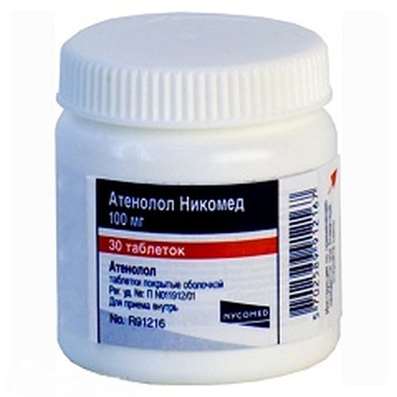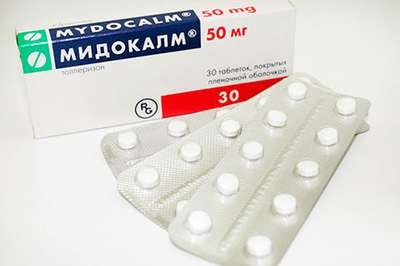Diagnosis in Pathological Anatomy
05 Dec 2016
Pathologist Dr. Doping tells about telepathology, digital biopsy and post-mortem diagnostic methods.
Pathological anatomy - is a medical discipline and specialty, which is one of the main tasks of lifetime and posthumous diagnostics. Both are very necessary to physicians, clinicians, so demand for our specialty and very much needed. Autopsy provides a diagnosis after a patient's death. Sometimes people say to us: "Why do it? All the same, people died. " But it is extremely necessary in the first place for physicians to understand the causes of the disease. And despite the fact that the percentage differences posthumous lifetime and final clinical diagnosis is quite high (in Moscow it is 15% for 2015), the identification of the real causes of death, it is important for physicians to understand the tactics of his treatment tactics of patients. Therefore, for doctors it is very important.
But this part of the work demanded not only attending physicians. Now there is a new trend, where the relatives of the dead are interested in it. Moreover, this trend is more and longer growing. Previously, there was a tendency that the family refused autopsy ( "Do not touch, do not torment a man, and so he suffered much in his lifetime"), the family is now very often are interested to be informed about the true cause of the disease, the true the cause of death, especially when it comes to defects in medical diagnosis and treatment, which may have been made during the patient's life. And here there is this need, sometimes it is even linked to economic reasons. I can not say that this is a positive trend, but it is, unfortunately, appeared, and more and more. With each passing year increases the number of cases where family members are suing the hospitals. Frankly, I was a little afraid of this trend, because even in the media appear publications about the "werewolves in white robes," which ruined the patient. It bends, of course. Although we are faced with different events. There are cases really negligence in the treatment of the patient, there are cases where doctors are incompetent, and here the results of post-mortem autopsy is extremely important to establish the truth.
Meldonium is good for heart Muscle, Piracetam is excellent for brain.
And even relatives sometimes ask: "Be sure to perform an autopsy, so that we may know the true cause of death." And after this sometimes lawsuits facing the hospitals, and sometimes dead relatives winning these lawsuits. So there is also such an economic background of the need of this work. But, of course, first of all it is necessary by the attending physicians. This part of the work, as I have already said, it is necessary, and, of course, first and foremost, it aims at identifying defects in health care, what is now received the name (maybe you've heard the term) iatrogenic. Iatrogenesis - a disease or pathological processes which are associated with the actions of a physician. I think this should not be in principle: it is a doctor's actions may be disease or any complications? In fact, unfortunately, they sometimes arise. And, thankfully, they are rare. But every such case resonance causes a response from the relatives of the deceased, and the doctors, our professional community, too, is very responsive to it. Therefore, these cases require a broad public awareness.
But it is with regard to post-mortem diagnosis. And there are lifetime morphological diagnostics, based on a study of biopsies. Biopsy - a pieces, which in vivo are taken from the bodies (currently almost any body can take pieces, sometimes very subtle, using a thin needle, sometimes larger), or surgical material. These lifetime tissues and organs are studied microscopically to determine in vivo diagnosis, which largely determines the tactics of treatment of patients. Sometimes there are situations when the patient lies on the operating table, and pathologists are urgently some piece - found, for example, some knot in the liver. The surgeon is crucial to know what it is: whether it is some scar scar is small, whether it is tumor metastasis. Because it depends on the tactics of the further course of the operation. Either it is necessary to look for this tumor, and run with it to the piece of pathologists. Sometimes, when they relocate, even for the sake of preoperative make urgent microscopic study of the drug. The answer is in 15-20 minutes, which is pretty fast. The surgeon is so sterile washed holding hands to avoid being not to sterilize, and waits for a response. And on the phone immediately report, for example: "You know, there is a metastasis of the tumor." And then the doctor is already beginning to urgently seek and do an audit bodies to find the primary tumor. Or, on the contrary, they say, "You know, do not worry, there is an old brush that does not matter."
Therefore it is very important lifetime study. But it is especially in demand lifetime morphological diagnostics in oncology practice, because the amount of tumor is very large, they are varied and require specific expensive treatment. And here we need accurate verification of the tumor, in order to make a correct diagnosis and choose a method of treatment. The peculiarity of this morphological vivo diagnosis is that it requires a modern high-tech methods, is very expensive. It requires special equipment, it requires new chemicals. Modern diagnostic methods based on the use of highly sophisticated molecular biological techniques, when you have to go down literally to the level of molecules. In particular, there are methods such as fluorescence method FISH, even when it is possible to mark individual genes, to watch and bet on the basis of this diagnosis.
But these methods are, of course, can not be applied everywhere, since our post-mortem service is not very well equipped and funded, unfortunately, on a residual basis. First and foremost, of course, funds are used for the clinical specialty, diagnostic and therapeutic measures. Therefore we have to concentrate the complex modern expensive diagnostic morphological methods in large medical centers, specialized post-mortem offices that are able to carry out this work. And then that's where people are, and their histological specimens for diagnosis, and sometimes the material has to be sent literally to other cities. But now modern communications methods, thank God, facilitate this work. And thanks to the transmission of information through telephone channels, using digital equipment fails to transmit over long distances micropreparations images, and even individual micrographs - it's pretty simple, you can send even by e-mail - and now there are methods when using modern digital equipment fails scan the entire microscopic slide and transmit it over long distances, on the other end of the wire, which may even be in a different country (now even the international contacts are available from our experts, pathologists), and they give an accurate diagnosis.
In routine practice, such sophisticated methods may be, and not always in demand. But very often raises difficult diagnostic cases, even when the gather eminent experts, professors and argue about the diagnosis. This is the case in clinical practice and are bedside concilia and morphological in our profession. And here, of course, very important to be able to use the authority and experience of leading specialists in our country and abroad.
This method is used when the transmission of digital information, microscopic preparations, called telediagnosis and establish our diagnosis - the name of telepathology. At the beginning of April 2016 in Irkutsk held a conference with international participation, experts from Germany will arrive, and just will discuss methods of tele-diagnosis of diseases and the possibility of participating in this pathologists.
I have already said that the lifetime morphological diagnostics on biopsy material operating the lion's share of the work of pathologists. And at the same time our specialty, of course, identified only with the opening, not only among the general public, in the popular media, but even in a medical specialty that is the case. And that, unfortunately, our kind of trouble. To the extent that there is a need to rename our specialty and call it not pathological anatomy and clinical morphology, morphological clinical diagnostics. Why? Because the word "anatomy" is confusing. Moreover, this part of the job for so long remained out of sight, even the medical community that there is "autopsy" in the federal law on the protection of public health, but there is no "Biopsy Diagnostics" section. Now we are trying to get out of this legal impasse to be able to legalize and fund the most important part of the work. Thank God, it is possible in this direction to make positive steps.

 Cart
Cart





